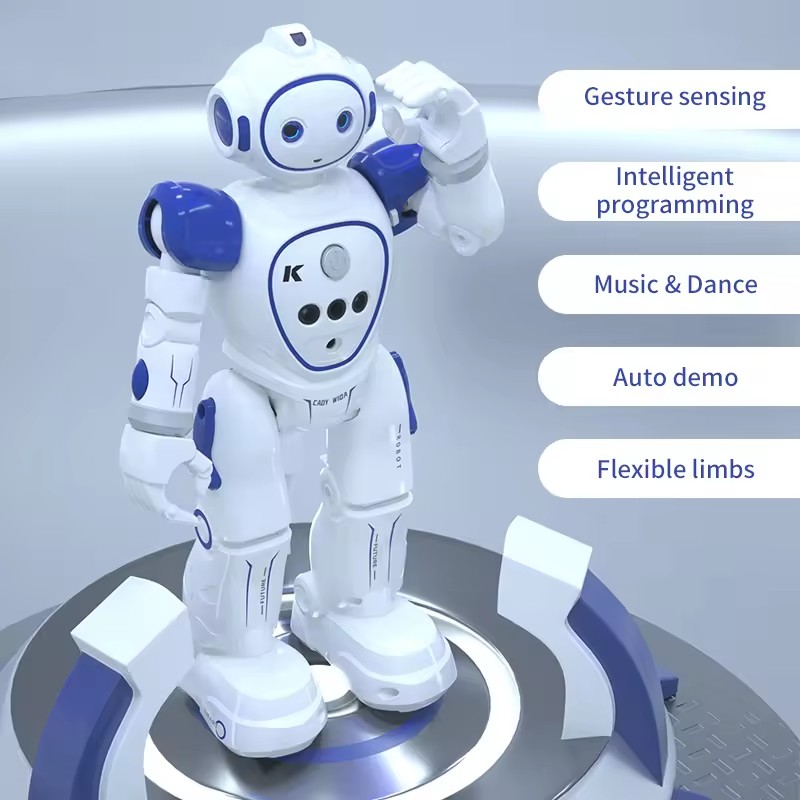The toy industry has always been a reflection of technological advancement, and the emergence of robot toys is no exception. These interactive playthings have transformed the way children and even adults engage in play, learning, and storytelling. As we delve into the realm of robot toys, it becomes evident that they are more than just entertaining gadgets; they represent a paradigm shift in educational tools and entertainment options.
Robot toys have come a long way from being simple automated machines to sophisticated devices that can interact with their environment and owners. Modern robot toys are equipped with an array of sensors, cameras, artificial intelligence (AI), and connectivity features that allow them to move autonomously, respond to voice commands, learn from interactions, and even connect to smart devices and the internet of things (IoT).


One of the key drivers behind the popularity of robot toys is their ability to combine fun with education. Children are naturally curious about the world around them, and robot toys tap into this curiosity by offering a hands-on approach to learning. Coding robots, for instance, teach children the basics of programming and computational thinking through play-based activities. By giving instructions to the robot and observing the outcomes, children develop logical reasoning and problem-solving skills, which are essential in today's digital age.
Moreover, robot toys serve as a gateway to STEM (science, technology, engineering, and mathematics) education. They encourage children to explore concepts in mechanics, electronics, and artificial intelligence while having fun. This exposure at a young age helps foster an interest in these fields, potentially leading to career choices aligned with future job markets.
Manufacturers are also creating robot toys that cater to specific educational needs. Some are designed to teach language skills, social interaction, and emotional intelligence. Others are specifically tailored for children with special needs, providing therapeutic benefits and helping them improve their fine motor skills and communication abilities.
Beyond their educational value, robot toys offer a new form of entertainment. With the integration of AI, these toys can adapt their behavior based on the user's interactions, providing a unique play experience every time. They can also serve as companions, particularly for children who may not have siblings or peers to interact with regularly.
The market for robot toys is witnessing significant growth, driven by falling costs of technology and increasing consumer demand. Parents and educators are recognizing the value of these toys in preparing children for a future where technology plays an integral role. Furthermore, as people continue to spend more time at home due to global events, robot toys provide a means of stimulating engagement and learning within the domestic setting.
However, the rise of robot toys is not without its challenges. Privacy and security concerns are paramount, especially as these toys often connect to home networks and may collect personal data. Manufacturers must ensure that their products comply with privacy regulations and implement robust security measures to protect users. Additionally, there is a risk that reliance on robot toys could limit creativity and social interaction skills if not balanced with traditional forms of play.
Looking ahead, the future of robot toys appears to be one of integration and innovation. As technology advances, we can expect robot toys to become even more interactive, personalized, and educational. They may also become more accessible, with smaller and affordable devices entering the market. The potential for robot toys to assist in therapy and support for the elderly is also an area ripe for exploration.
In conclusion, robot toys stand at the intersection of technology, education, and entertainment. They offer immense potential to revolutionize how we play and learn, providing dynamic interactions that captivate the imagination. As this industry continues to grow, it is crucial for manufacturers, parents, and educators to collaborate in ensuring that these toys deliver both fun and substantial benefits while addressing privacy and security concerns. Robot toys are not just a glimpse into the future of play; they are shaping the leaders and innovators of tomorrow.
Post time: Jun-13-2024



